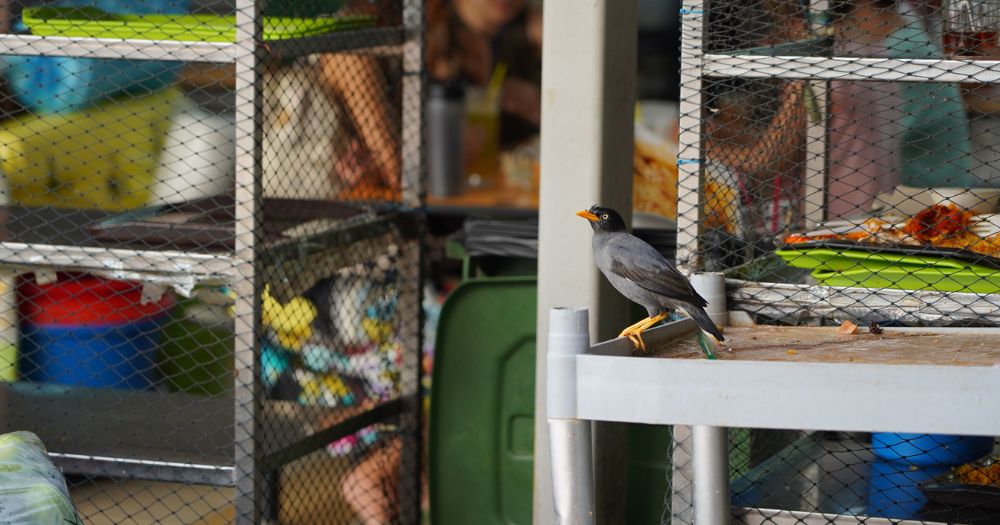Singapore is home to one of the most invasive species of birds in the world. And no, it is not the pigeon.
In hawker centres, the birds of this urban city turn into our makan buddies -- but how much do you know about them?
Here, we reproduce an excerpt by Kow Zi Shan from #WeLoveSingaporeHawkers, a book filled with stories all about the local hawker culture past, present and future.
The book, published by Landmark Books and TTSH Community Fund, aims to raise at least S$500,000 for two key charity programmes: Iwanttogohome (IWGH) and Help Me Go Home, which support needy patients with out-of-pocket expenses for services and equipment that are essential in helping with their daily living and recovery at home.
Stepping into a hawker centre is a uniquely Singaporean experience. There’s the unmistakable hum of kitchen exhausts, the smell of food being cooked and served, the chatter of people. Our food heaven attracts not just humans but wildlife too.
A majority of these animals are birds looking to get an easy meal. These agile animals hardly get a second look by hawker patrons, but there is more to these fowl than meets the eye. Spend enough time observing them closely, and you might just discover their quirks as they go about their day.
Like fellow Singaporeans, these birds are serious about their food. Mynas, in particular, are sure to swoop in for the meal once the humans take their eyes off them. Sometimes they bicker over food scraps too.
The hawker centre is more than just a food hall for them, it is also their home territory. Each day, they take breaks from foraging and spend time drinking from water puddles formed by uneven floor tiles, preening their feathers and cleaning their beaks on the pipes running above our heads.
The more intelligent birds are actually capable of remembering human faces. Yet, most of us can’t tell individuals apart or even know much about these feathery hawker centre patrons that we encounter daily.
Here is a brief rundown of the usual suspects that are among us in hawker centres:
Javan Myna
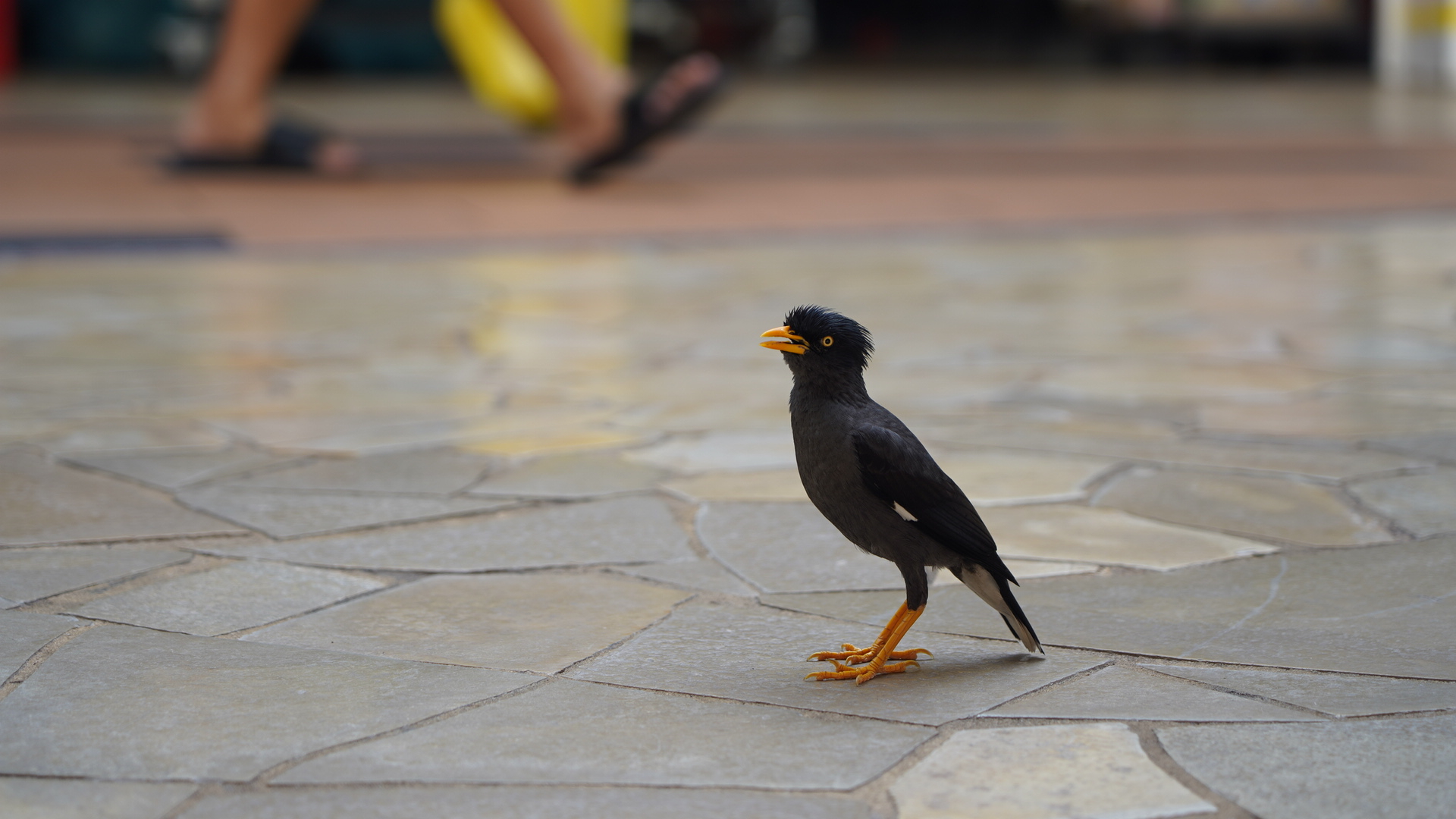 Image by Kow Zi Shan.
Image by Kow Zi Shan.
You may know them for their great sense of balance as they perch on bowls left on tables. But do you know they are actually a globally threatened species?
Javan mynas were introduced to Singapore in the 1920s through the caged bird trade from the Indonesian islands of Java and Bali.
In its native range, their population has been declining due to prolific capturing for the wild bird market -- with an estimate of under 10,000 wild individuals remaining.
This highly intelligent species has, however, thrived in Singapore; its population here is over 100,000.
The Javan mynas have adapted so well that they have outcompeted the common myna, their cousins who are native residents.
Common myna
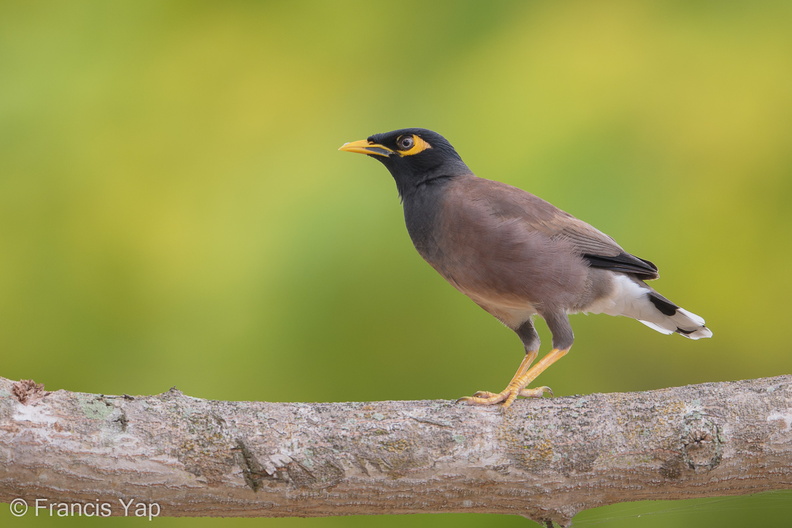 Image by Francis Yap.
Image by Francis Yap.
Despite its name, the Common myna is now the lesser seen species of myna in Singapore.
It is not hard to spot the differences between the two species.
Common mynas have brown feathers and distinctive yellow skin around their eyes that Javan mynas lack.
While the population of the natives have declined here due to the competition with the introduced Javan mynas for food and nesting sites, they are thriving very well in other places.
So much so that the species is being regarded as a pest and a threat to the ecosystem in many parts of the world. The International Union for Conservation of Nature (IUCN) has named the Common myna as one of the most invasive species on Earth.
House crow
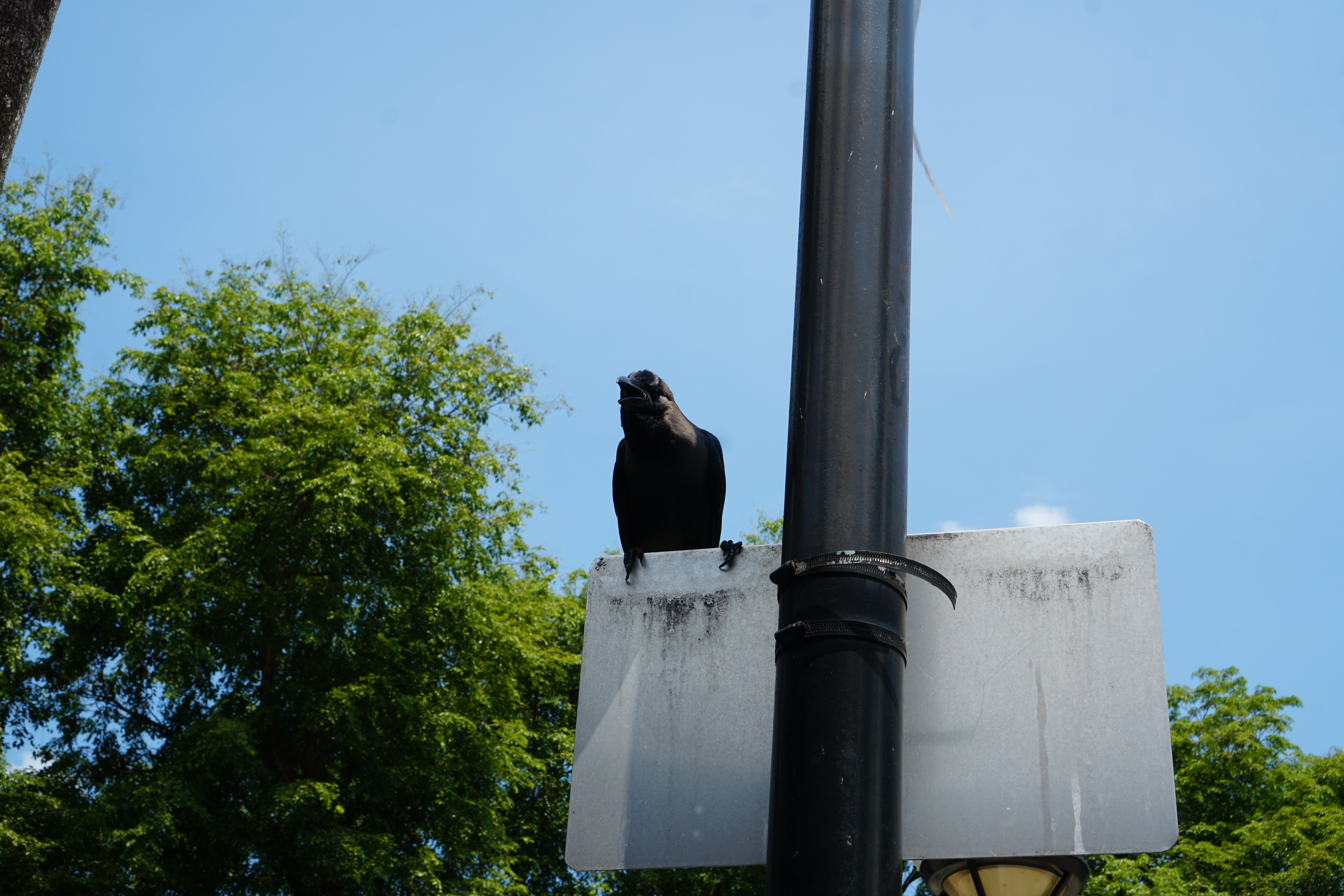 Image by Kow Zi Shan.
Image by Kow Zi Shan.
Typically perched on nearby trees or higher railings near hawker centres, the house crow is an introduced species from the Indian subcontinent.
They tend to gather in large numbers in tall trees to rest for the night. These noisy birds are extremely intelligent and have attacked residents while protecting their young.
Rock pigeon
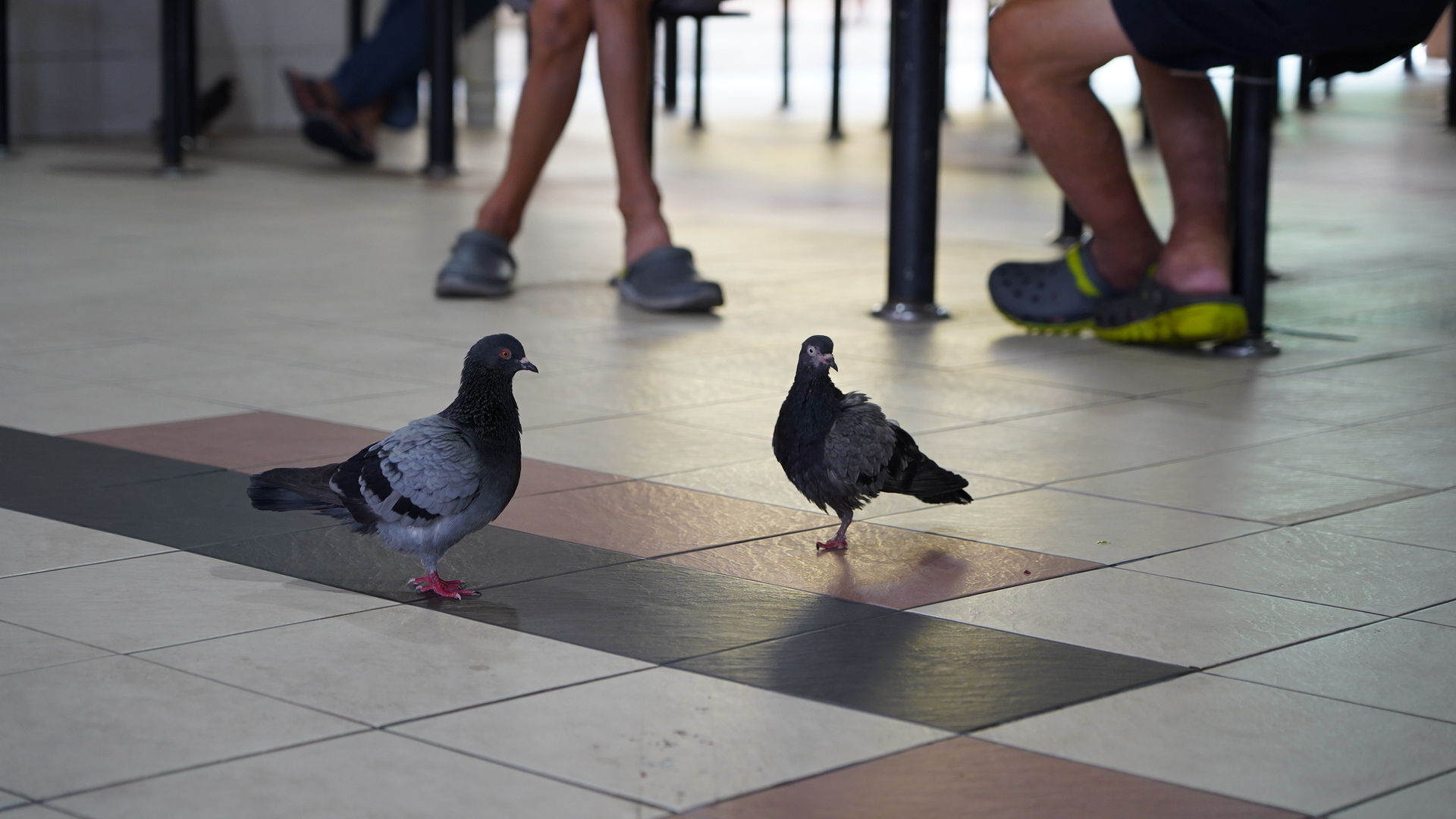 Image by Kow Zi Shan.
Image by Kow Zi Shan.
Darting between tables and the legs of hawker centre patrons, scouring the ground for anything worth eating, are another permanent resident in our hawker centres -- pigeons.
Also known as Rock doves, the bird is named not for its colour but its native habitats of cliff sides and caves. The domesticated pigeon is now considered feral. They used to be bred for food and as homing pigeons due to their ability to find their way back to their point of release.
Highly adapted to the human habitat, the bird, found almost worldwide, is an invasive species in Singapore.
Spotted dove and Zebra dove
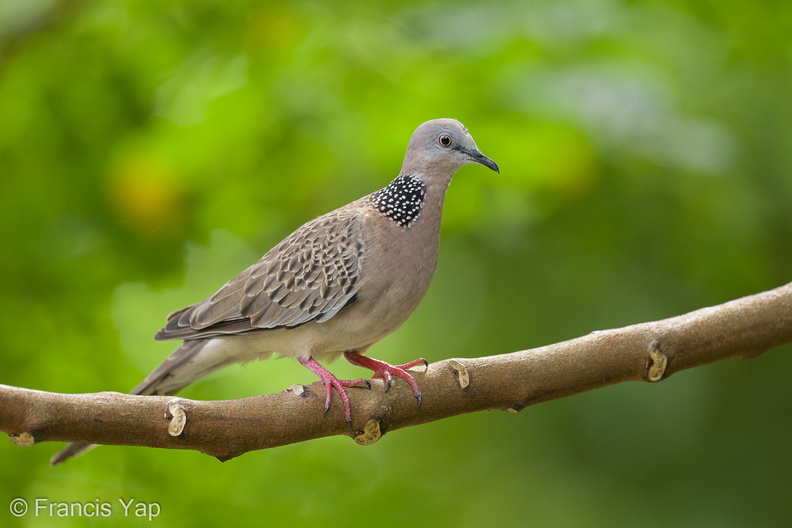 Image by Francis Yap.
Image by Francis Yap.
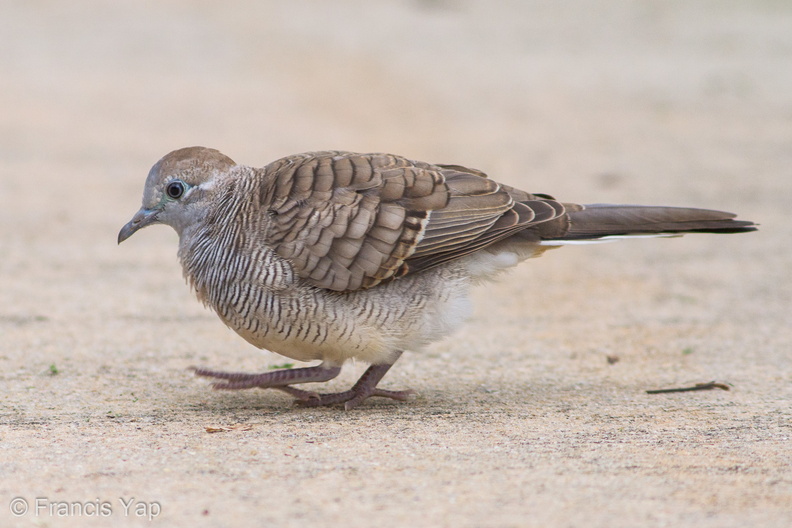 Image by Francis Yap.
Image by Francis Yap.
Singapore is also home to two other varieties of urban doves -- the Spotted dove and the Zebra dove -- easily identifiable by the markings on their necks.
The Spotted dove has a black collar with white spots, while the smaller Zebra dove has black and white barrings on its neck and a bluish face.
Both of these native doves are ground feeders that forage on grass seeds. Though shy creatures, they are commonly seen in hawker centres.
Eurasian Tree Sparrow
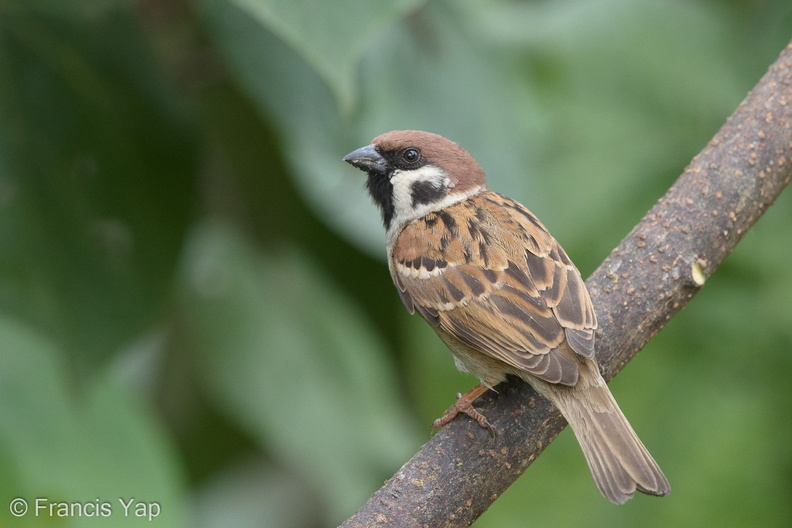 Image by Francis Yap.
Image by Francis Yap.
The smallest urban bird of them all is the Eurasian Tree Sparrow. This native sparrow is possibly more common in urban areas than our green spaces. It is a scavenger for seeds, grains and often leftover human food.
A food paradise for birds
Be it native or not, these ubiquitous birds are undeniably a part of this landscape we call home.
However, the charms of these birds are lost on most hawker centre patrons.
To many, they are unwelcome guests, commonly regarded as pests and often waved off or shooed away at our favourite food haunts.
About 3,100 cases of public feedback relating to bird nuisance at hawker centres were received by the National Environment Agency (NEA) between 2018 and 2020, which works up to an average of around 90 feedback cases each month.
In hawker centres and elsewhere, bird droppings stain surfaces like floors, tables and chairs. Beyond just about such annoyance, birds like pigeons can spread diseases to humans through their droppings. Bacteria in dried bird droppings can become airborne and inhaled, causing psittacosis in humans. This bacterial infection of the lungs has pneumonia-like symptoms.
Their droppings can also stain surfaces like floors, tables and chairs.
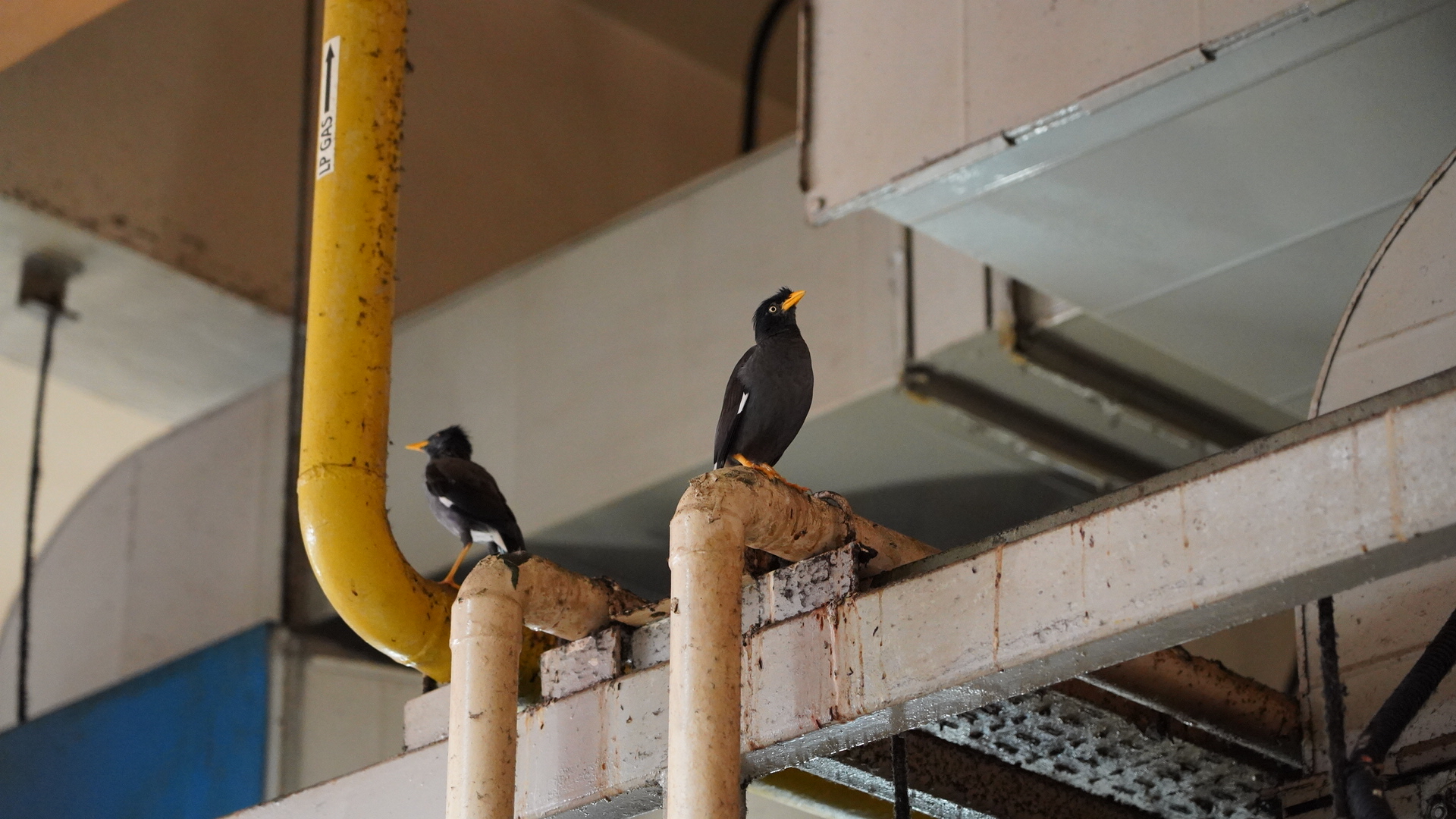 Image by Kow Zi Shan.
Image by Kow Zi Shan.
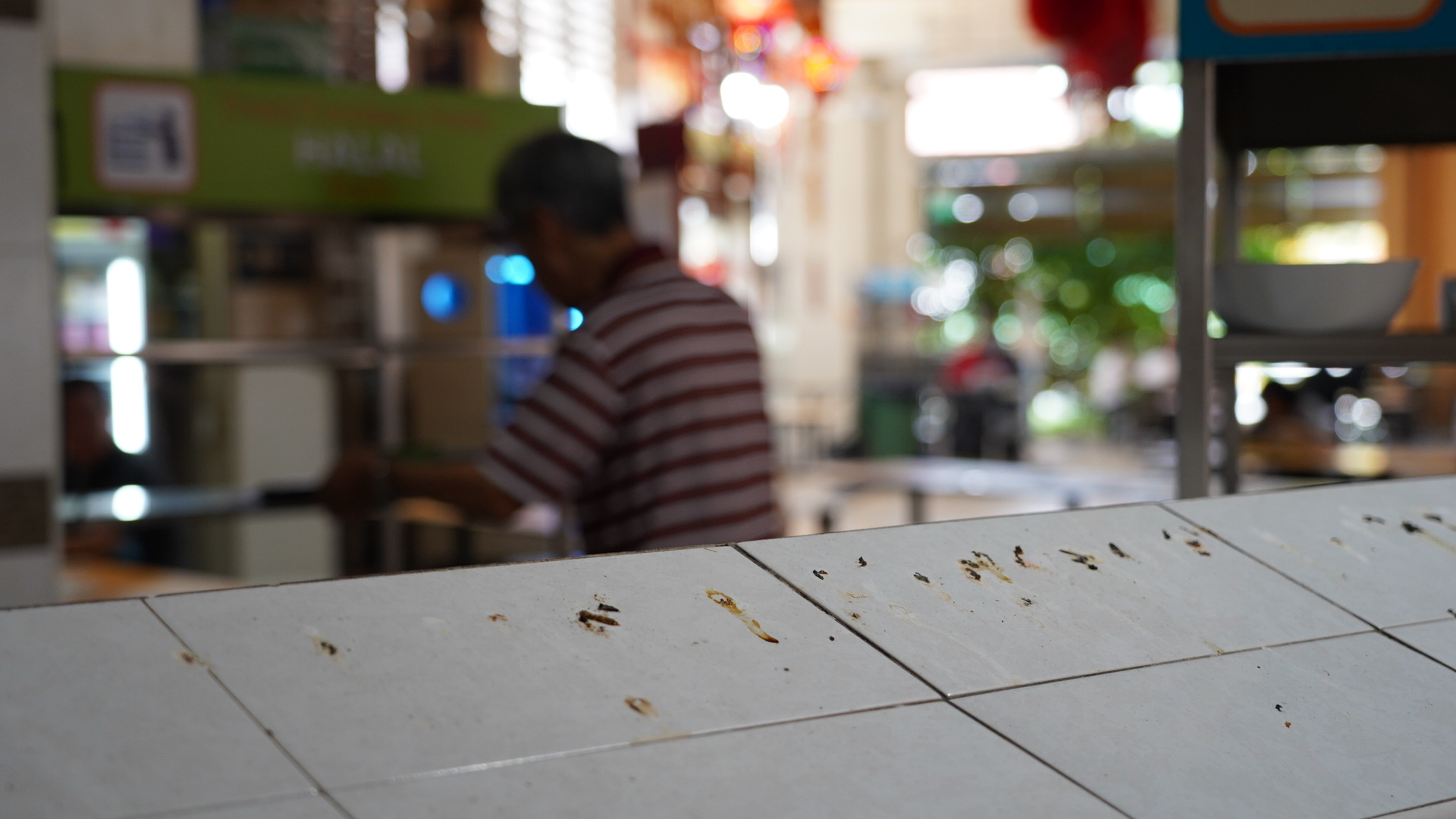 Image by Kow Zi Shan.
Image by Kow Zi Shan.
To combat this, bird-proofing structures in hawker centres are a sight as common as the birds themselves.
Bird spikes line virtually every flat surface to cut down on areas where they can perch and to discourage nesting or roosting.
Nets are also deployed to deter flying birds from finding their way into the hawker centre.
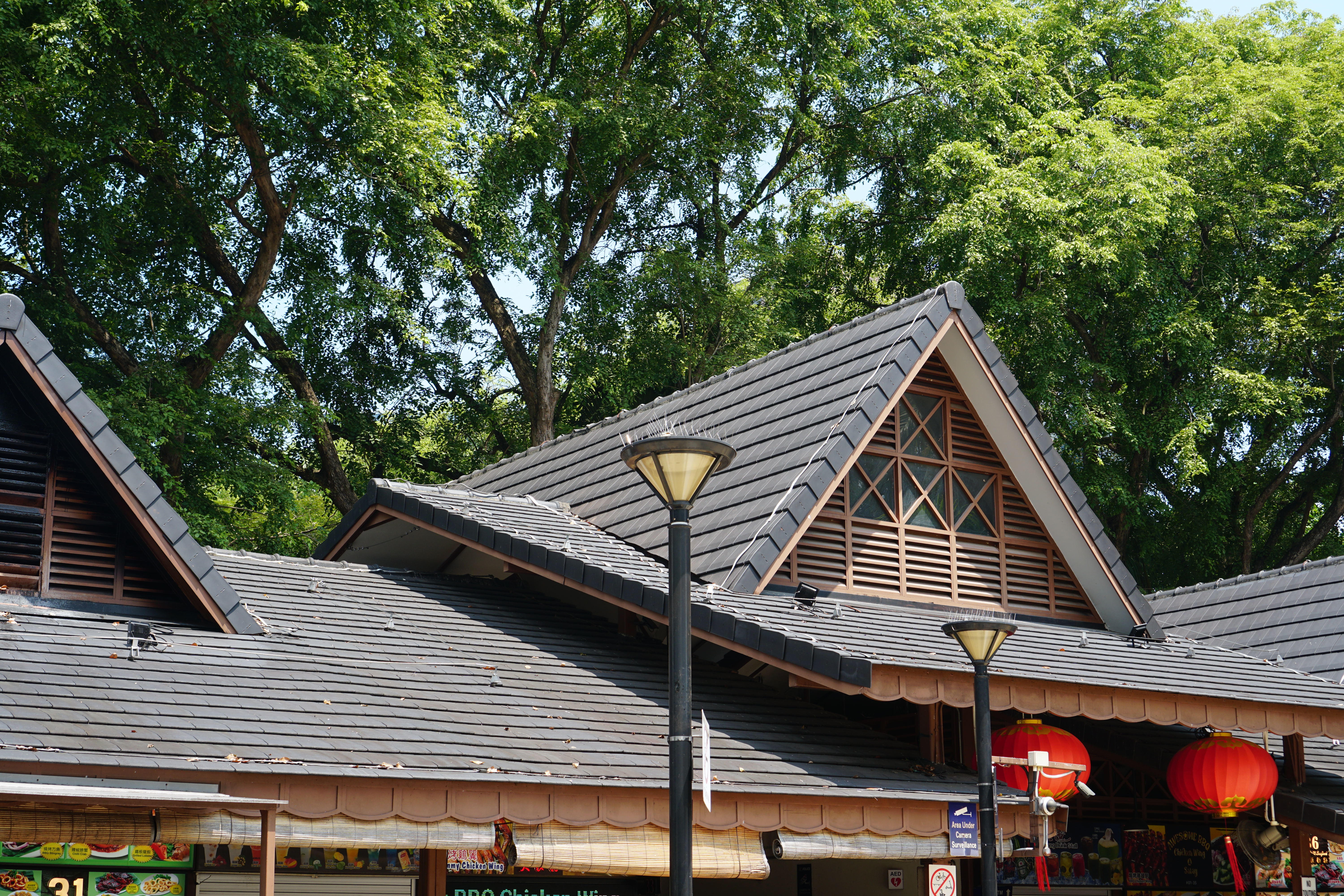 Image by Kow Zi Shan.
Image by Kow Zi Shan.
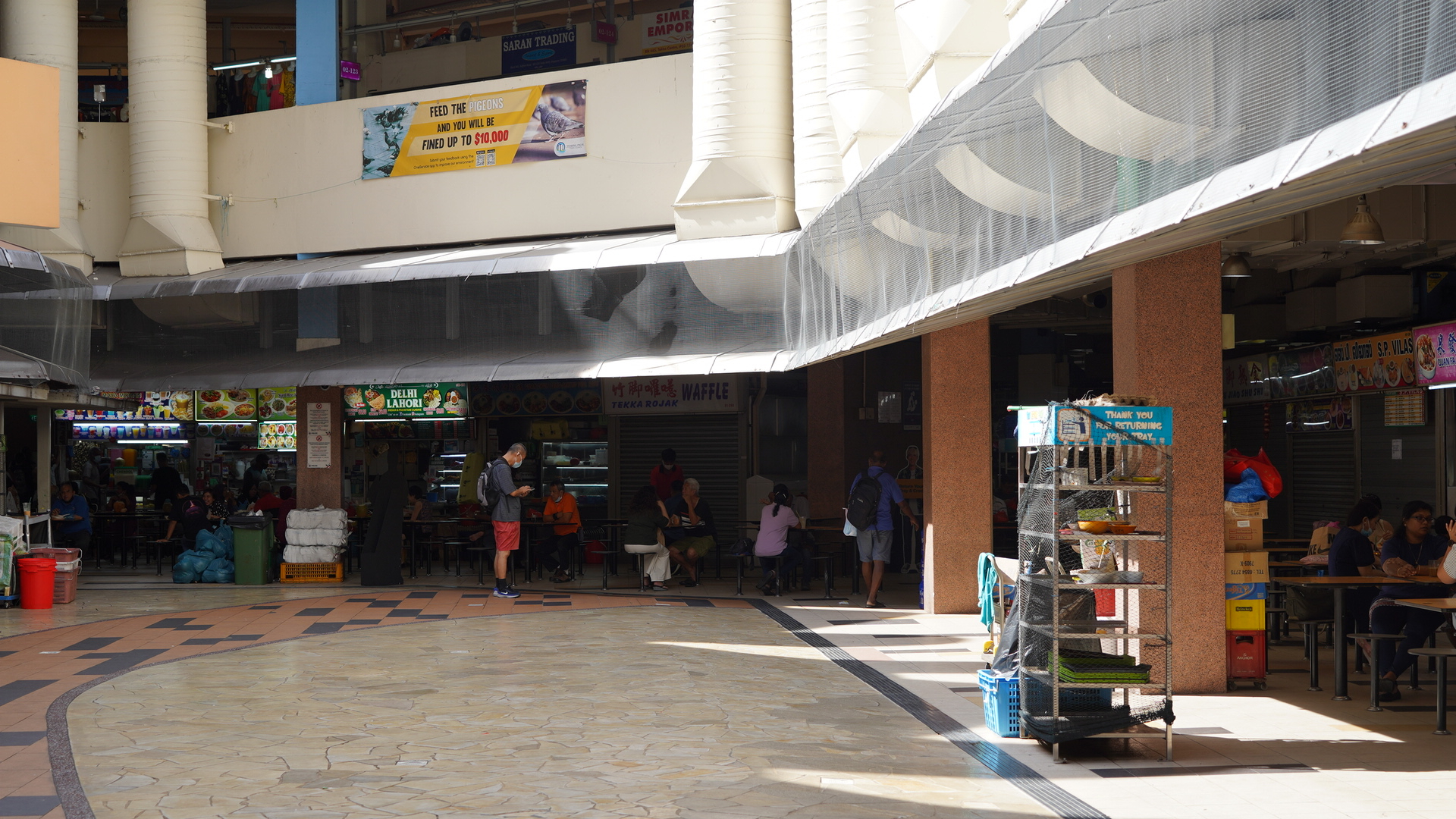 Image by Kow Zi Shan.
Image by Kow Zi Shan.
According to NEA, new hawker centres will also be designed to minimise areas for birds to perch, such as by concealing overhead pipes and ducts.
While these measures can mitigate the problem, the solution to the issue is something simpler yet harder to implement – it comes down to limiting the availability of leftover food in our open-air food halls.
According to a recent study by the National Parks Board (NParks), food made available by humans drives up the bird populations.
If patrons return or even clear their trays in hawker centres, the birds would find it much harder to treat hawker centres as food hubs.
Instead of clearing tables, cleaners can be stationed at tray return points to keep birds away from leftover food.
Birds cannot obey rules, but we can. Now that tray return is made mandatory, birds might find fewer meals at our hawker centres.
But rest assured our feathered friends won’t be left with hungry stomachs as they will naturally seek other sources of food in the natural habitat.
After all, though urbanised, these birds are still wildlife.
The green spaces in Singapore provide more than enough seeds, fruits and insects for these animals yet, for a long time, have been seeking convenient meals from hawker centres.
So, as long as there’s food to be had, these adaptable, free-loading patrons will remain familiar fixtures to our hawker centres.
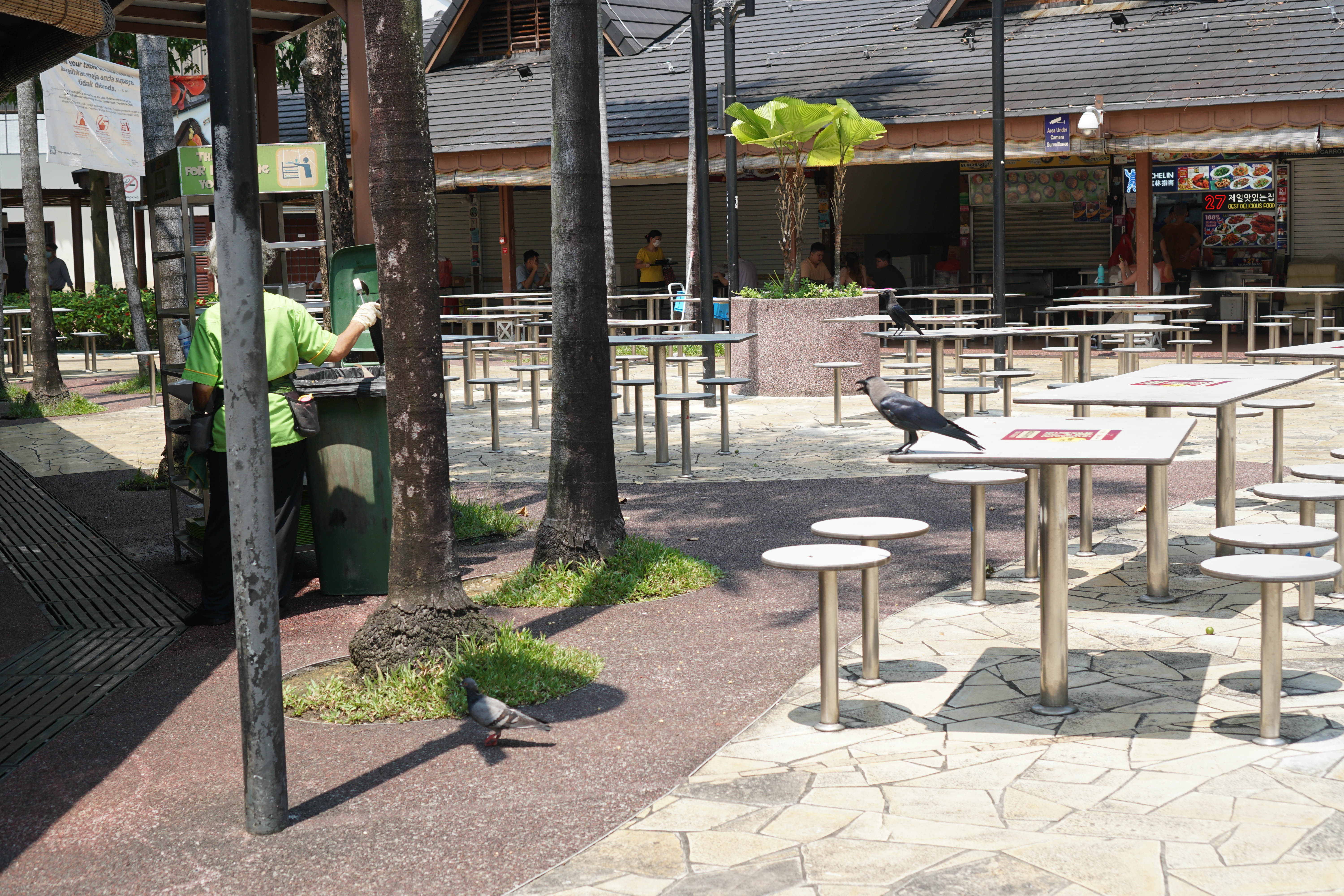 Image by Kow Zi Shan.
Image by Kow Zi Shan.
Top image by Kow Zi Shan.
If you like what you read, follow us on Facebook, Instagram, Twitter and Telegram to get the latest updates.
